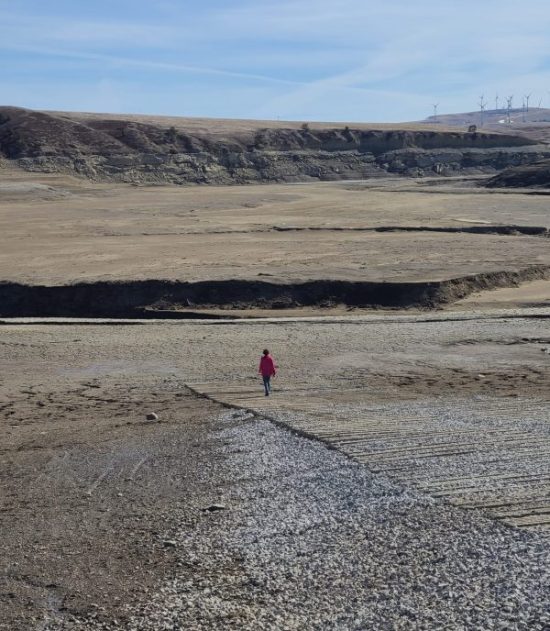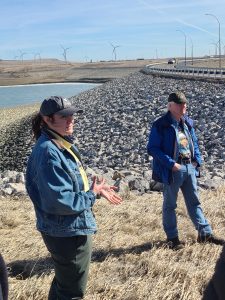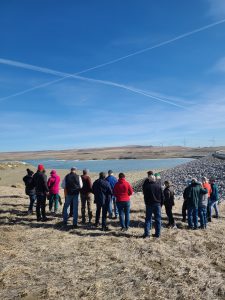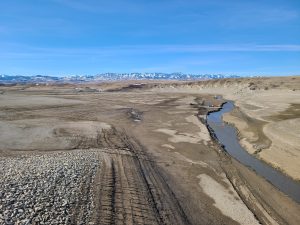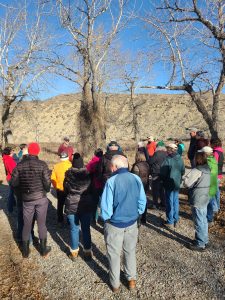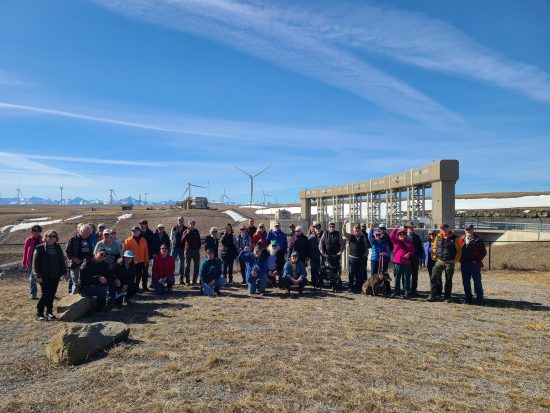
Adventures for Wilderness, Oldman River Past, Present and Future — March 17, 2024
March 17, 2024
- •
- •
- •
Photos and text by Lindsey Wallis
We all knew what it would look like, but it doesn’t mean it didn’t hurt like a punch to the gut as we stood on the end of that boat launch that reached out into nothingness. It causes my eyes to well up thinking about it still. Just a cracked expanse of built-up silt that stretched for miles across the bed of the reservoir. And the Oldman River, nothing but a muddy trickle, cutting a deep trench through the muck.
The reason? A dam built 40 years ago, opposed by thousands of ordinary Albertans, First Nations, and scientists, even the government’s own. In addition to cutting off Bull Trout populations downstream from their spawning grounds it flooded miles of riparian habitat and archeologically significant lands sacred to the First Nations. In only 40 years the reservoir has filled with silt, dropped by a stalled river that can no longer hold its sediment. The dam has a knock-on effect of slowing all three rivers upstream, causing them to deposit their sediment and become slower and warmer, increasing the growth of algae and harming native fish populations that require cold, clear streams to thrive.
In May 1992, after the Oldman Dam was completed, acourt-ordered environmental review of the project recommended that the structure be decommissioned. This report stated that “the environmental, social and economic costs of the project, outbalanced the economic benefits.”
Our province seems to be oblivious to the harms created by dams, even though countries around the world are dismantling them. There are proposals for a new dam on the Red Deer River and an expansion of the Chin and Snake Reservoirs in Southern Alberta. How will these reservoirs be filled with no water coming from the headwaters? Currently the government’s plan is “plan for extreme drought, hope for snow and rain”. Hope is not a strategy.
Speaking of the headwaters, with drought on the horizon we need to look after them. Instead, the government is allowing the Grassy Mountain Mine to continue through a new approvals process, despite the fact that it was rejected in 2021 because it wasn’t in the public interest. Coalmining is a notoriously thirsty industry. This madness goes on as three communities who rely on the Crowsnest River for their drinking water are having water delivered by truck this year, pumped from a hole dug in the river bottom.
We must demand protection of our watersheds from the source. Clearcuts, mines, and dams are incompatible with healthy watersheds. Period. Full stop.
I’m grateful to all 50 folks who came out to show their support and learn more about water issues in our Province. I’m especially grateful to Lorne Fitch, Bob Costa and Cliff Wallis who volunteered their time to share their experiences and knowledge with us.
Read more about Alberta’s impending water crisis in the most recent Wild Lands Advocate and what we need to be demanding from government to safeguard our rivers and our water for future generations.
